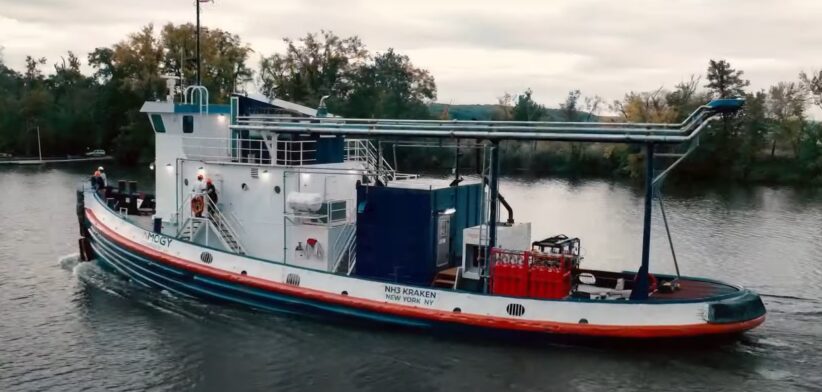A tugboat built in the 1950s is showcasing the future of environmentally-friendly sea travel, becoming the world’s first carbon-free, ammonia-powered maritime vessel.
United States-based company Amogy has sailed the NH3 Kraken, a tugboat originally constructed in 1957 and retrofitted with an ammonia-to-electrical power system, on a tributary of the Hudson River, upstream from New York City.
Amogy CEO Seonghoon Woo said the demonstration was a significant step towards reducing global carbon emissions and moving the maritime industry closer to the International Maritime Organization’s (IMO) target of net-zero emissions by 2050.
Mr Woo said it proved both the viability of the technology and the potential of ammonia as a carbon-free maritime fuel.
“Governments across the globe and industry organizations like the IMO have set aggressive goals to reduce global carbon emissions. These goals seem daunting, but they’re necessary – and our successful demonstration of the world’s first carbon-free, ammonia-powered vessel proves that they’re achievable,” he said.
Mr Woo said successfully sailing the NH3 Kraken was the most significant application of the technology to date, following successful demonstrations of an aerial drone, commercial farm tractor, and semi-trailer.
“Amogy will apply knowledge gained from this demonstration to real-world applications of its technology, including both retrofit projects and newbuilds.”
Mr Woo said Amogy’s patented ammonia-to-electrical power system split, or “cracked,” liquid ammonia into its base elements of hydrogen and nitrogen.
“The hydrogen is then funneled into a fuel cell, generating high-performance power with zero carbon emissions. This technology offers a sustainable, clean energy solution, tailored for hard-to-abate sectors like maritime shipping, as well as stationary power generation applications.”
He said during the demonstration, the NH3 Kraken was fueled with green ammonia, produced entirely with renewable energy, further reducing its carbon footprint.
Mr Woo said the global shipping industry emitted close to 1 billion tons of greenhouse gasses per year, equivalent to the emissions of a G7 country like Germany or Japan.
“Ammonia is the world’s second most produced chemical, with around 20 million tons moving around the globe through 200 ports each year. With that track record, shifting the industry mindset to use it as a fuel is completely achievable, and can happen at an accelerated pace,” he said.








